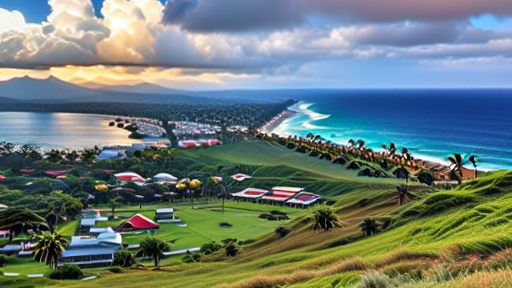Earthquake Hawaii 9th February 2024: The Big Island of Hawaii experienced a seismic event as a 5.7 magnitude earthquake struck south of Naalehu. This event, not uncommon for the region, sent shockwaves across the island, serving as a stark reminder of the formidable power of nature. This article aims to delve deeper into the scientific, social, and historical dimensions of this seismic episode, capturing the essence of the Big Island’s unique geological identity and the imperative of preparedness.
Unraveling the Source: Insights from the Depths
To comprehend the tremors beneath the paradise of Hawaii, we turn to geologists like Dr. Kaia Nakoa from the Mauna Kea Observatories. Dr. Nakoa elucidates the intricate geological symphony: the Pacific Plate sliding beneath the Big Island, creating pressure and stress within the Earth’s crust. This pressure, periodically released as earthquakes, found its manifestation in the 5.7 temblor, originating along the island’s southern flank.
Dr. Nakoa underscores the predictability of such events, stating, “This earthquake falls within the expected range for the Big Island. While larger events are possible, understanding the island’s geological history and potential seismic activity is crucial for preparedness.”
Assessing the Quake’s Impact: A Stark Reminder
Earthquake Hawaii 9th February 2024: The 5.7 earthquake sent seismic jolts across the island, reaching as far north as Honolulu. Fortunately, no major damages or injuries were reported. However, the event underscored the vulnerability of the island’s infrastructure and emphasized the importance of earthquake-resistant construction.
Kahu Moana, a resident living close to the epicenter, shares, “The shaking was intense, but our community pulled together to check on neighbors and ensure everyone was safe. We’re used to living with the Earth’s dynamism, and this event reinforces the need for continued preparedness.”
Earthquake Hawaii 9th February 2024: Hawaii’s Seismic Reality
Hawaii’s volcanic landscapes and its position at the convergence of tectonic plates render it susceptible to earthquakes. While destructive events are relatively rare, understanding the island’s seismic history and potential risks is imperative for mitigating future impacts.
The Pacific Tsunami Warning Center plays a pivotal role in monitoring seismic activity and issuing timely warnings, ensuring the safety of coastal communities. Furthermore, community preparedness initiatives, including earthquake drills and public education campaigns, empower residents to respond swiftly and safely during emergencies.
Building Resilience: Beyond the Tremors
The aftermath of the 5.7 earthquake paints a picture of the Hawaiian community’s resilience. Emergency services responded rapidly, and the community spirit prevailed, showcasing the island’s preparedness and adaptability.
Looking ahead, sustained investments in earthquake-resistant infrastructure, community education programs, and technological advancements in monitoring and early warning systems will be paramount in building a more resilient Hawaii.
Embracing Preparedness: A Call to Action
While the recent earthquake did not result in widespread damage, it serves as a stark reminder of the persistent risk of natural disasters. Whether residing in Hawaii or another earthquake-prone region, individuals can take simple steps to enhance preparedness:
- Secure your home: Anchor furniture, create a disaster kit, and learn how to shut off utilities.
- Develop a family plan: Establish a communication plan and designated meeting places in case of separation.
- Stay informed: Familiarize yourself with local earthquake hazards and warning systems.
- Practice drills: Regularly conduct earthquake drills with your family to ensure everyone knows what to do.
By embracing preparedness, communities can minimize the impact of future earthquakes and ensure the safety and well-being of their residents.
Earthquake Hawaii 9th February 2024: A Lasting Reminder
Though the seismic waves may have subsided, the echoes of the 5.7 earthquake reverberate throughout the Big Island. This event stands as a lasting reminder of the dynamic forces shaping our planet. By understanding these forces, preparing for their impact, and fostering community resilience, we can navigate the Earth’s tremors and continue to thrive in harmony with our ever-evolving planet.



